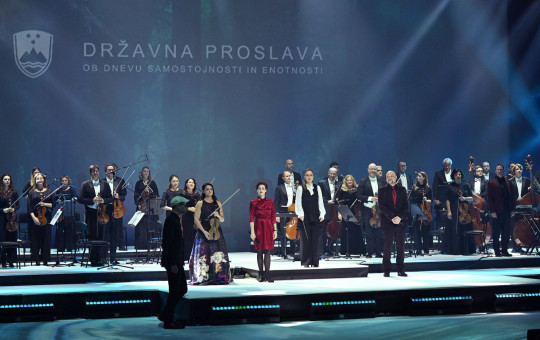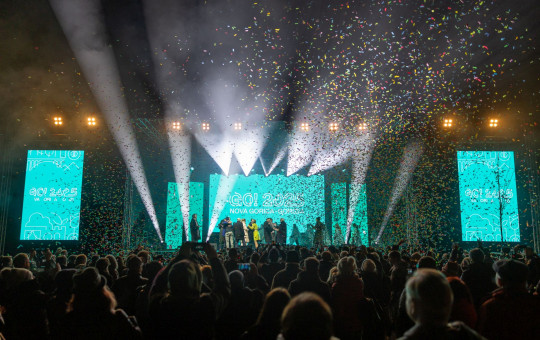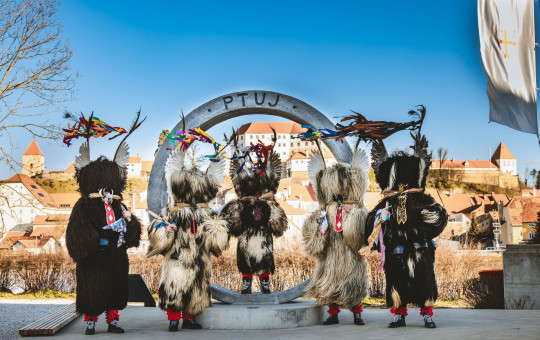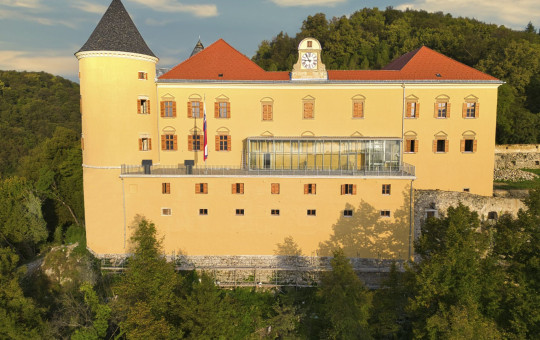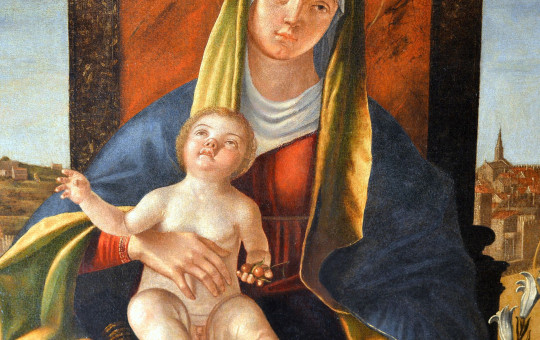Date: 26. May 2022
Time to read: 7 min
“The exhibition on the occasion of the 30th anniversary of Slovenia’s statehood reminds us that we Slovenes also know how to give seize opportunities, despite the many times we have pushed Sisyphus’ rock up a hill and seen it roll down the slope of history again and again. The events and persons captured in these photos are happy coincidences, like extraordinary mountain peaks rising from a sea of recurring episodes. While navigating through the history imposed on us by others but with the awareness of our national identity and originality, we chose the moments of the historical miracle ─ the birth of our own country.”
Proud of Slovenia – 30 YEARS
These are the words written by the philosopher and conceptual artist Dr Evgen Bavčar, that accompanied the opening of the “Proud of Slovenia ─ 30 Years” exhibition.
In addition to the permanent exhibition on the process of Slovenia gaining independence, 40 photos that are part of the exhibition presenting the successes and key events of Slovenia in the first 30 years of its independence have been on display in the Military History Park since May. It is an authentic expression of the history which we have written ourselves in a free and democratic country. The exhibition features photographs that depict the turning points since Slovenian independence was achieved, such as the unfurling of the Slovenian flag on top of Mount Triglav, winning the war to defend our independence, the introduction of our own currency, the Slovenian Constitution, international recognition, the introduction of the euro, high-level governmental visits, sports achievements, economic performance and many of the natural and cultural beauties of the country.
Path to Independence
In 2015, the Pivka Military History Park completed an important investment in the largest museum complex in Slovenia, a new pavilion, of which a large part is the “Path to Independence” exhibition. After ten years of creating a new story based on the renovation of the decaying old barracks the Park finally became the largest museum complex in Slovenia with the new pavilion, as well as the largest museum collection of military history in this part of Europe.
The “Path to Independence” exhibition in the new building is a major presentation showing the process of gaining independence in Slovenia, with a particular emphasis on the 1991 war. It begins with Yugoslavia and the barracks, continues with the declaration of independence, followed by a symbolic turning point – the fall of the Berlin Wall – and the beginning of the aggression against Slovenia. It is symbolic that a military museum with an emphasis on Slovenia’s attainment of independence was created in the barracks of the former Yugoslav Army from which the first tanks drove onto the road on 26 June 1991, with which the aggression of the Yugoslav armed forces began against the newly gained independence of the Republic of Slovenia.
Visitors also encounter a symbolic collapsing wall which separates the old from the new, like a funnel. The collapsing wall symbolises the historical turning points from the 1980s that led to democratisation and the process of Slovenia’s gaining independence. A recreation of the living room of a Slovenian family on 27 June 1991, when the historic evening news broadcast with Tomaž Terček was aired on television, evokes nostalgic feelings in visitors. Then there was the war. Reports of that day are broadcast on the television. From the balcony of the apartment you can experience a view looking out over the scene of the War of Independence. Large exhibits spur an interest in historical events, while also reminding visitors that the whole thing was not so innocent.
The exhibition space presents all the military technology related to Slovenia’s War of Independence: aircraft, tanks, helicopters and other military vehicles. In many visitors, the “Path to Independence” exhibition will awaken memories of our nation’s recent history, the performance of military service in the Yugoslav Army, the day of pride when the independent state was declared, and of a time of uncertainty on the one hand, and a firm commitment to establishing our own country on the other. Young people who did not experience those days will be able to learn about an important part of the history of our nation.
-
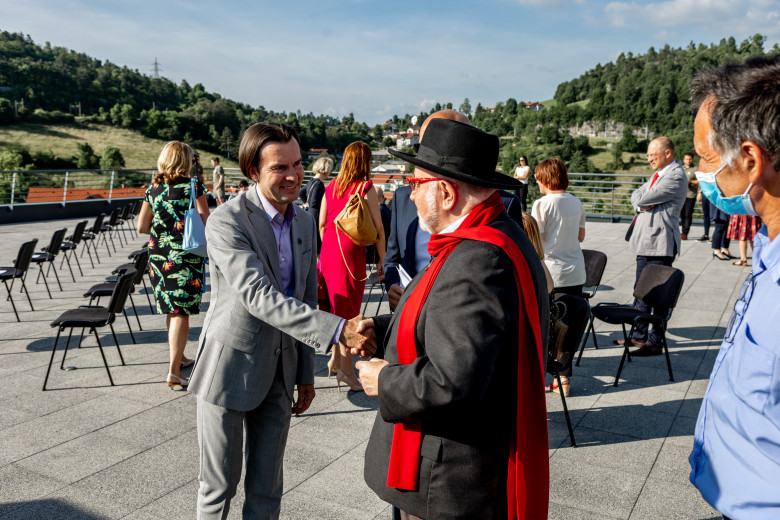 Director of the Government Communication Office Uroš Urbanija with Dr Evgen Bavčar, Slovenian philosopher at the event in Pivka.
Director of the Government Communication Office Uroš Urbanija with Dr Evgen Bavčar, Slovenian philosopher at the event in Pivka.
-
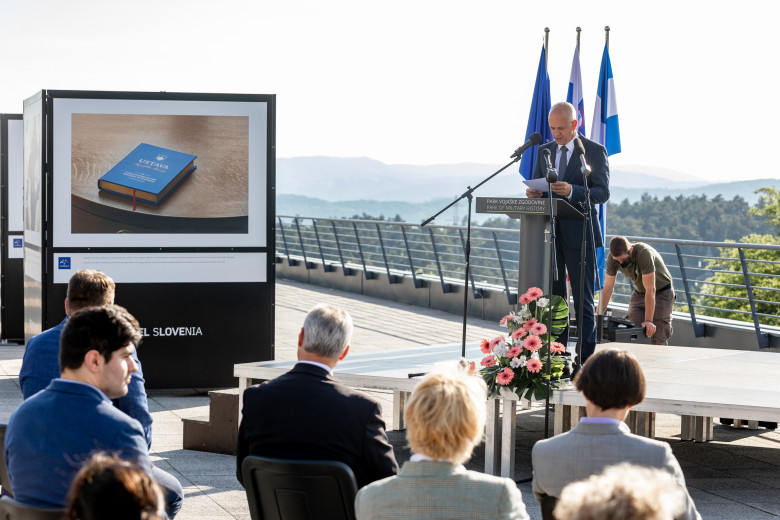 The opening speech by Janko Boštjančič, Director of the Park of Military History Pivka.
The opening speech by Janko Boštjančič, Director of the Park of Military History Pivka.
-
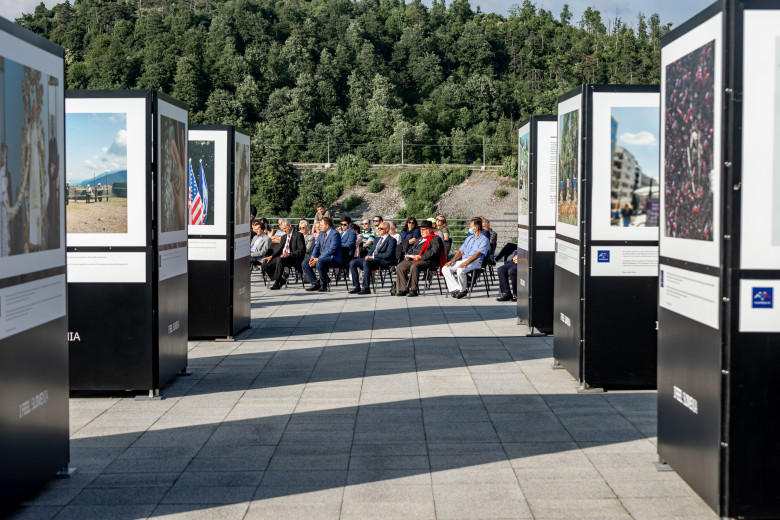 The exhibition on the occasion of the 30th anniversary of Slovenia’s statehood.
The exhibition on the occasion of the 30th anniversary of Slovenia’s statehood.
-
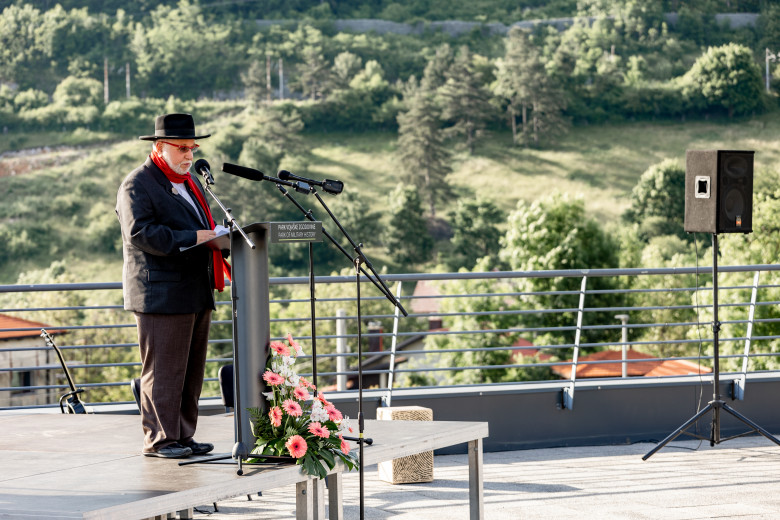 Dr Evgen Bavčar, the philosopher and conceptual artist.
Dr Evgen Bavčar, the philosopher and conceptual artist.
From defending against the external enemy to defending against an internal enemy
The exhibition gives visitors the experience of the events of the war through direct contact with some important exhibits from that period. The scenic arrangement presenting the penetration of the Yugoslav military unit involves a MiG-21 aircraft, a M-84 tank and BVP and BTR armoured vehicles. The Gazelle helicopter with the mark “Velenje TO-001”, which was the first aircraft that managed to defect from the Yugoslav Air Force, and the T-55 tank from a unit based at the Pivka barracks which was the first to start the aggression of the Yugoslav Army, are important “relics” of the 1991 war. As regards other armoured vehicles of interest, we should also mention a series of BOV vehicles manufactured by the Automobile Factory Maribor, TAM, which took part in various battles, the PT-76 tank and the MT-LBu command vehicle. The BOV M-86 vehicle of the special unit represents, in symbolic terms, the major role of the police in the conflict, and the operational vehicle of the firefighters from Mokronog draws attention to the importance of Slovenian firefighters.
The Military History Park now has a new, valuable exhibit – the Mercedes Benz 230-BINZ ambulance, which was donated to the Park for the museum presentation by the Velenje Health Centre. The ambulance is placed in the centre of the “Path to Independence”, indicating the important role played by paramedics and other medical staff in the war for Slovenia. “They were fighting for the lives of those who needed them during the war. The medical service of the Slovenian defence relied on civilian structures, and with this vehicle the museum wants to emphasise the important role of medical staff,” notes the director of the Military History Park, Janko Boštjančič.

